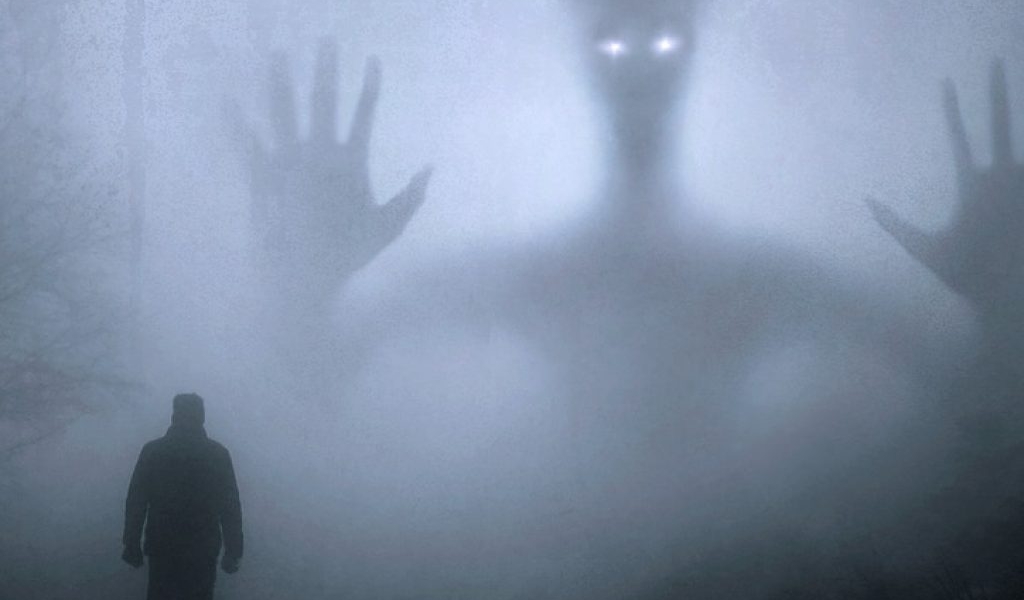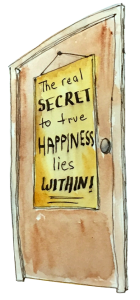Fear is a Fantasy Expectation Appearing Real.
Fear can get triggered in many ways. Some people are afraid of dogs or snakes or spiders, for example. Others fear experiencing such emotional states as humiliation, rejection, shame, loneliness, and failure. Still others fear such life occurrences as poverty, serious illness, or death.
Whether your fear is a momentary reaction or a sustained state of being, energetically, fear is a contraction. It is also a figment of the imagination.
What we are afraid of may be real, but our fear itself is something we make up in the theater of our mind and act as though it is real.
It helps to understand what happens in our bodies when we become afraid and to know that we have the power to interrupt this response. Bruce Lipton is a cell biologist whose work contributes to bridging the gap between science and spirit. He explains that fear literally contracts our energy. It paralyzes us from thoughtfully and compassionately responding to the object of our fear. He explains:
When we are in a happy state, we are in a state of growth. When we get afraid, we get in a state of protection. And when we get in a state of protection, it completely changes the blood flow to the body, because when you are in a state of growth, you are nourishing the viscera, which is really the organs that take care of maintaining our health, etc.
But when we start to get afraid, we want to send the blood to the arms and legs because the arms and legs are what we are going to use for fight or flight to escape the issue or deal with the problem. So the hormones and stress cause the blood vessels in the gut to squeeze shut, which forces the extra blood to go to the periphery where we are going to nourish that fight or flight behavior.
Well, interesting enough, the same hormones affect blood vessels in the brain, because when we are in a state of happiness and growth, we are using our conscious reasoning and our thinking and our logical thought. But in a state of a reaction to a threat, conscious reasoning is not very helpful, because it is a very slow process.
So, basically what happens is in the presence of stress hormones, blood vessels in the forebrain, which is the center of conscious reasoning and logic, are squeezed shut just like the blood vessels in the gut, and this forces the blood to go to the hindbrain.
Well, the hindbrain is reflex and reactive behavior, so basically it says from the moment you get under stress you actually shut down the thinking processes of the conscious mind and open up the reactive, reactionary processes of the hindbrain. . .
Simply put: when we are under stress, we become less intelligent.
Clearly, some fear reactions are justifiable, such as coming face-to-face with a big bear. In other cases, we can learn to retrain our fear response. Fear does not necessarily have to incapacitate us.
Consider the following two fear reactions by contestants on a recent show of America’s Got Talent. Both were singing their hearts out seeking their big break. Each was faced with an alarming experience. Simon Cowell interrupted them and asked them to sing a different song. The 30-year-old young man was like a deer in the headlights. Simon offered him the opportunity to come back later in the day which he eventually did successfully. But in the moment, he just stood there speechless and unable to think what to do. In contrast, the eight-year-old girl who was similarly interrupted by Simon was also stunned initially. Simon offered her some water and she smiled and said, “Well, that just happened!” She composed herself and sang another song.
In the moment of our fear being triggered, we can unconsciously allow our physiological response described above to kick in and take over. Or, we can do what that little girl did. She overrode her autopilot response by acknowledging that something unpleasant happened and then affirmed that she was OK.
Here are 5 simple steps to retrain your reaction to things you fear:
- Observe yourself. Play detective and watch to see exactly what you do when you get afraid. Notice what triggers your fear.
- Interrupt your autopilot response. Practice noticing when your fears kick in. Stay conscious. Don’t lose your mind.
- Choose to be OK. Ask yourself, “How else might I respond to this other than being afraid?” Practice telling yourself that you can manage the situation. You can be simultaneously afraid and OK.
- Downgrade your fear. As you practice being OK when you are afraid, your fears will lose their power. Build trust in your ability to cope in the presence of stress.
- Repeat. Building new response patterns requires repetition. Be patient and keep doing this consciously until it becomes your new autopilot response.
For further insight into mastering the art of being you, read more here.
If you would like to know more about me and my work, please explore my website here.




